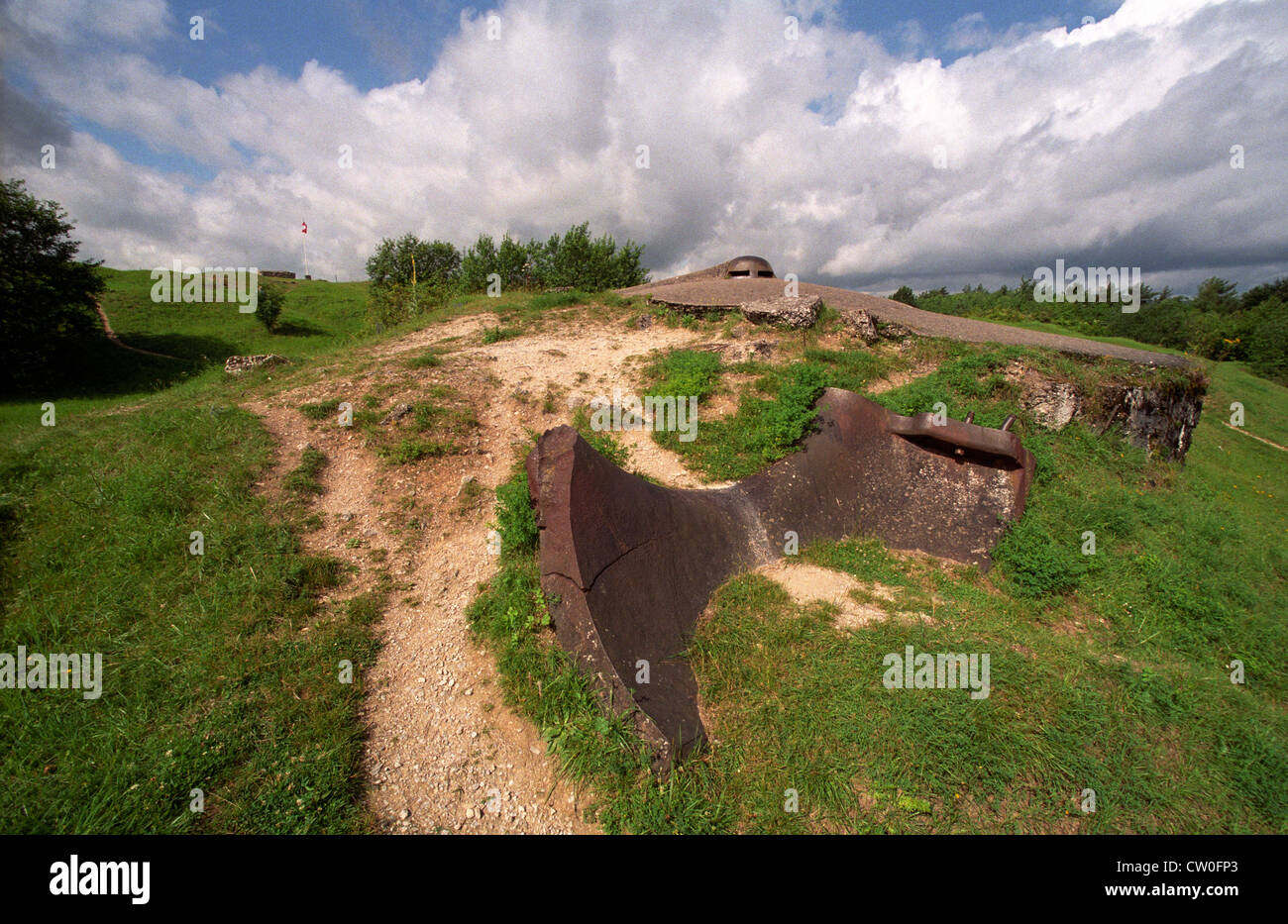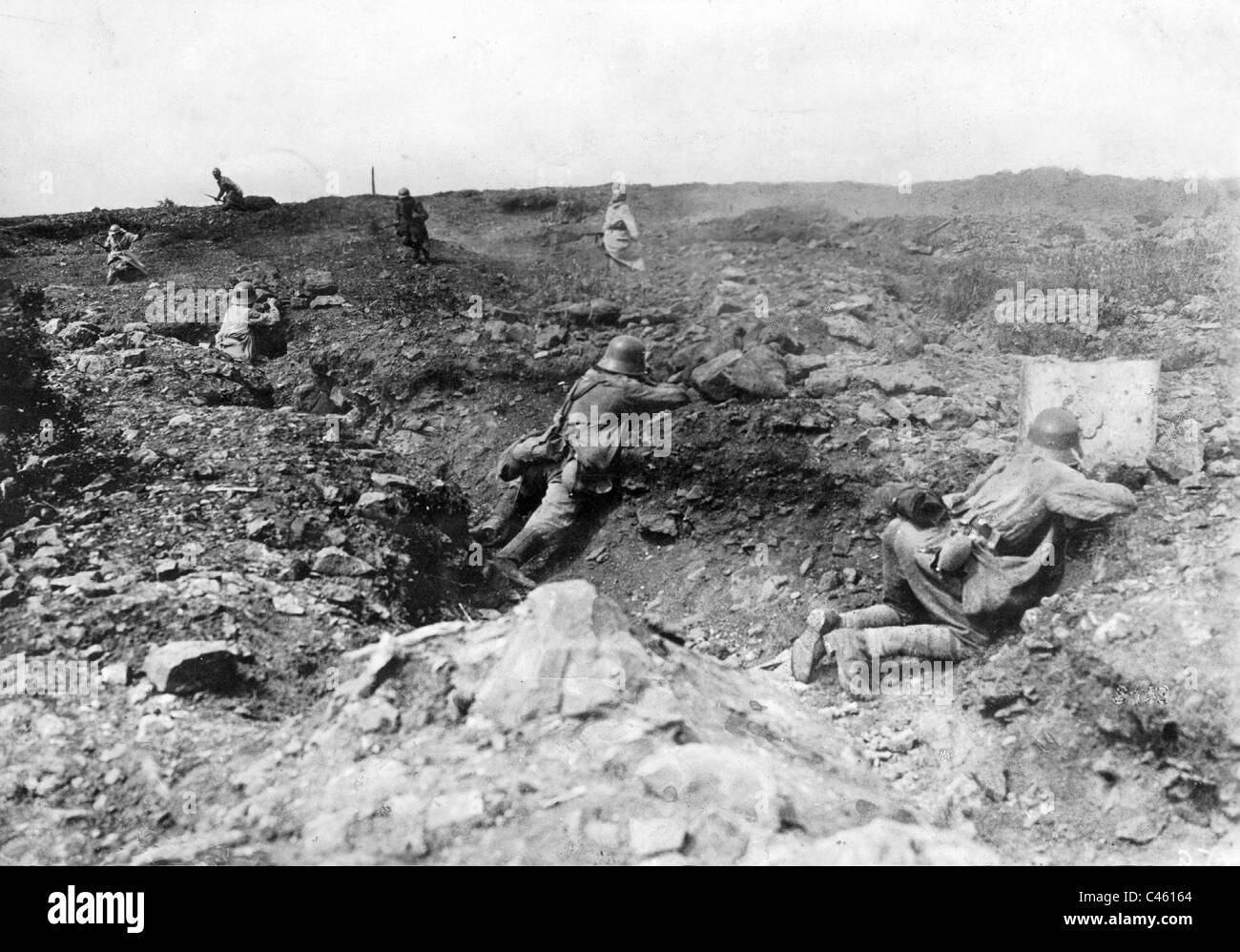

In one 15,000-strong French division, 9,000 men were dead, wounded, or simply missing. The might of the German attack pushed the French line back a mile and over the next three days, horrifying losses were sustained as they were forced to retreat further.

As this tool of destruction made its battlefield debut, French trenches were burned, with men roasting inside them. Some Germans were armed with a new weapon, the flamethrower. The 10 month battle of Verdun in 1916 is accountable for over 1 million deaths. An officer recorded, “We are surrounded by wounded and dying men whom we are totally unable to help.” Once the barrage ceased, German assault troops rose from their trenches and pushed forward. The German artillery crews were instructed that “no enemy line is to remain un-bombarded,” and that “nowhere should the enemy feel safe.” The French were overwhelmed by the relentless onslaught. On February 21, 1916, more than 1,220 German guns around an eight-mile perimeter fired two million shells at the French in the opening eight-hour bombardment of the battle. His scheme to inflict a relentless slaughter on the enemy and win the war was called Operation Gericht-a term loosely translating as “judgment” or “place of execution.” He planned to lure the French army into a battle of attrition, expecting that his opponent “would be compelled to throw in every man they have.” Falkenhayn anticipated a kill-ratio of five French for every two Germans. Falkenhayn targeted Verdun because of its position on the Allied line and its sentimental value to the French people. In his estimation, this would then force the British to sue for peace. This is a beautiful piece of World War I history through art.

In a letter to Kaiser Wilhelm II in late 1915, Falkenhayn argued that the war would only be won by bleeding France to death and draining its will to fight. This aquatint etching is titled 'Bataille de Verdun 1916, Le moulin et létang de Vaux', which translates in English to 'Battle of Verdun 1916, The mill and the pond of Vaux'. The British sector of the Western Front also did not lend itself to offensive operations. Out of reach across the Channel, this great foe could not be assaulted directly. To date, 630 minesweepers died while demining the zones.German General Erich von Falkenhayn regarded the British as the most formidable of the Allied Powers in the Great War. To deal with the massive cleanup and unexploded ordnance issues, the French government created the Département du Déminage (Department of Demining) after World War II. Not all are so lucky to escape unscathed and so the French and Belgian governments still pay reparations to the “ mutilée dans la guerre“– the victims of the war nearly 100 years after it ended. Occasionally, the Iron Harvest claims casualties of its own, usually in the form of a dazed farmer and a destroyed tractor. Every year, all along the old Western Front in France and Belgium, the population endures the “Iron Harvest” – the yearly collection of hundreds of tons of unexploded ordnance and other war materiel still buried in the ground. This does not mean that the areas are completely safe, however. In these areas, people were allowed to return and rebuild their lives. Nine villages deemed unfit to be rebuilt are known today as the “ villages that died for France.” Inside the Zone Rouge signs marking the locations of streets and important buildings are the only reminders that those villages ever existed.Īreas not completely devastated but heavily impacted by the war fell into other zones, Yellow and Blue. The people of this area were forced to relocate elsewhere while entire villages were wiped off the map. Those areas that were completely devastated and destroyed, unsafe to farm, and impossible for human habitation became the Zone Rouge. Immediately after the war, the French government quarantined much of the land subjected to the worst of the battles. After the war, von Falkenhayn claimed that his intention at Verdun was not to. German losses were approximately 142,000 killed and 187,000 wounded. A brutal battle of attrition, Verdun cost the French an estimated 161,000 dead, 101,000 missing, and 216,000 wounded.

But the most dangerous remnants of these battles are the unexploded ordnance littering the battlefield. The Battle of Verdun was one of the longest and bloodiest battles of World War I. These massive bombardments and the brutal fighting inflicted horrifying casualties, over 600,000 at Verdun and over 1 million at the Somme. During the battle, which lasted over 300 days in 1916, more than 60 million artillery shells were fired by both sides – many containing poisonous gases.


 0 kommentar(er)
0 kommentar(er)
